Italy loves wine and wine lovers visit Italy. Wine Routes Italy: how to navigate between the endless variety of flavours, tastes and traditions?

Italy is entirely crossed by a network of tourist itineraries designed to promote and guard the territories where excellent local wines are produced. These are the so-called Wine Routes Italy, not chosen at random, but governed by a 1999 law that guarantees the quality of the offer. Treat yourself to a journey through magnificent lands, rich in art, history, and nature, where you can get to know many of the excellences of the local wine culture. How? It's simple, along the Wine Routes Italy you'll find not only information material, but also wineries and companies, ancient or recently born, to observe up close the production of the finest Italian wines.
You'll get many chances to appreciate the food and wine traditions of each region, but above all you'll meet people happy to share an authentic passion and a knowledge that has been handed down for generations.Would you like to undertake a magnificent e-bike tour to discover the enchanting landscapes of the Verona countryside, sprinkled with lush vineyards that well-known Amarone wine is made up of? Take advantage of the ticket that Visit Italy offers you to enjoy a fantastic experience: you will take part in a tasting of refined wines and exquisite local specialties.
21. Wine Routes Italy: Terrano Route
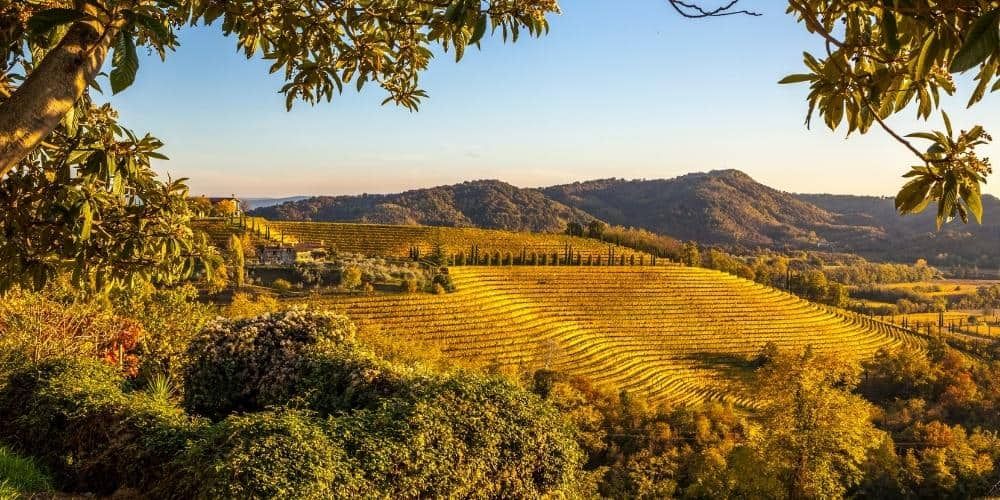
The 20 km journey between Opicino and Visogliano, in Friuli-Venezia Giulia, is ideal for getting to know the Terrano wine. The rugged natural scenery with the hills of the Karst and the vineyards overlooking the sea is a spectacle in itself. You can start your trip in Zolla, and then continue towards Trieste. Along the way stop at Borgo Grotta Gigante, to see one of the most spectacular natural caves in Europe. Of course, Trieste itself is worth a visit, with its monuments, the magnificent historic buildings and the squares overlooking the sea.
Head to the Sanctuary of the Assumption, then, dating back to 911, perhaps with a break at the Monte Orsario Regional Nature Reserve, to admire the landscapes of the region. The final stop is the bay of Sistiana, with its beautiful sea and the Rilke path, where you'll see the cliffs more closely.The Terrano, the vine that gives its name to this itinerary, may not be particularly well known outside the region, but it gives a wine that's much loved by the locals for its strong taste. Once it was also used as a remedy against anemia, while today it's an excellent accompaniment to the typical cold cuts and meats of Friuli.
Do you dream of visiting an ancient royal residence to experience the charm of the Habsburg epoch? Take advantage of the Visit Italy ticket, which will allow you to explore the sumptuous and majestic Miramare Castle, dating back to the 19th century, the historical museum, the stables, and the marvelous park.
20. Wine Routes Italy: Colline del Ducato
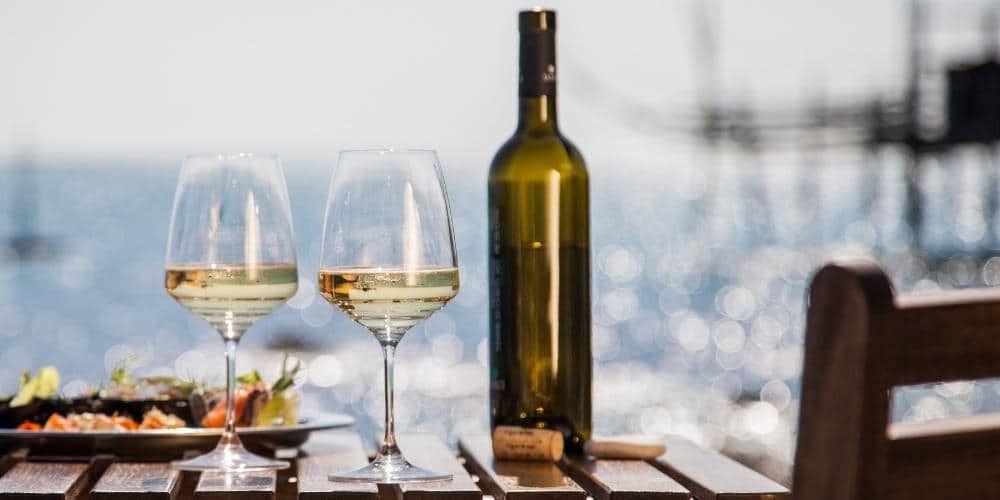
We are in Abruzzo, in the province of Teramo, where important DOC wines are born, together with Moscato, Chardonnay and with Passerina, the native white wine of the region.The Route of Colline del Ducato starts from Giulianova, on the coast. You'll enter then the hinterland, among the vineyards where the wine Trebbiano d'Abruzzo is produced, to reach Notaresco. Here is where the one that's probably the most famous wine of the region is born, the Montepulciano d'Abruzzo.
After a stop in the fortified city of Civitello, go back towards the sea, up to Roseto degli Abruzzi, not only a famous holiday destination, but also an important wine production center. In fact, in this area, in Montepagano, an important review of the typical wines of Abruzzo is held every year. The journey continues to Pineto, once again towards the hinterland, where you'll get the chance to admire not only the gullies, typical clayey formations characteristic of this area but also the beautiful, ancient town of Atri.
Take the opportunity to participate in an exciting tour, which will guide you to discover a historic winery in the Abruzzi region. The ticket offered by Visit Italy will also allow you to taste five traditional local wines and some delicious regional products.
19. Wine Route of Val d'Aosta
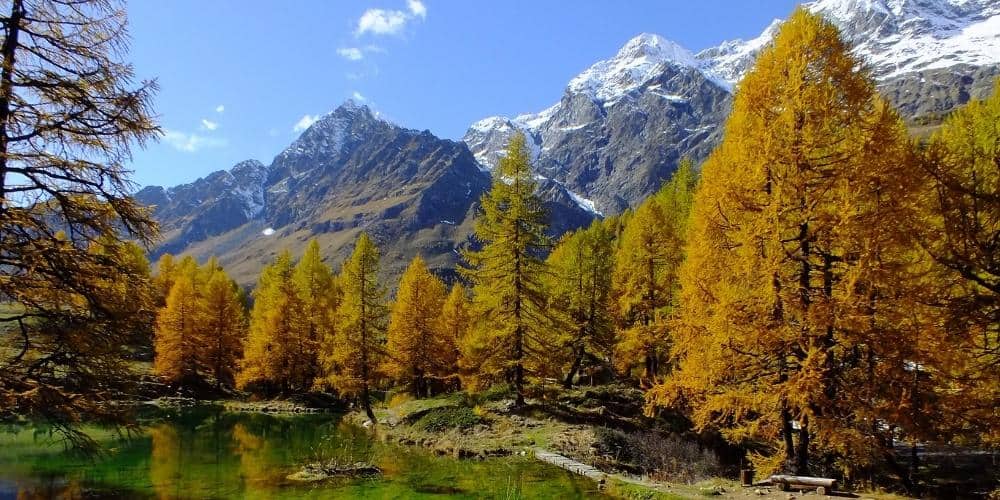
On the slopes of the Alps, in the area that goes from the valley of the Dora Baltea river to the town of Pont-St-Martin, there is a network of five important wine tourism itineraries.
The paths that sometimes climb up to about 1200 meters above sea level, cross naturalistic scenarios of incredible beauty and take their name from the peaks around which they wind. Among these are some of the highest in Europe: Mont Blanc, Gran Paradiso, Monte Emilius, Cervino and Monte Rosa. They are routes suitable for everyone, designed for nature lovers. In Val d'Aosta, despite an apparently not easy climate, vines have been grown continuously, probably since the VIII century BC.
Today the region produces several DOC wines, thanks to the patience and passion of the winegrowers. Among the best ones there are, for example, Müller Thurgau, Pinot Gris or Blanc, Chardonnay, and Muscat Blanc.

18. Route of Sangiovese

This itinerary dedicated to wine is part of a wider network designed to enhance all the flavors and culture of Emilia-Romagna. The landscape is wonderful, with the vineyards flanking the olive groves and then disappearing into the woods. There are also beautiful natural caves to visit, in an area called Vena del Gesso Romagnola.
Not to be missed also the villages of Faenza, famous for its ceramics, the medieval borough of Brisighella, or the fortress of Riolo Terme, together with the ancient parish churches scattered throughout the whole territory.The wines born in this region are varied, many of the vines have the Docg, Dop, and Igp brands. Lambrusco is one of the most famous products here, but the Route owes its name to what is probably the most cultivated black grape variety in Italy. The Sangiovese, indeed, is originally from this area, but very popular in Tuscany as well.
The Sangiovese di Romagna is a ruby red wine with an aroma of violets and wild berries. Perfect to taste with the countless delicacies of the local cuisine. Exploring the Wine Museum with the ticket that Visit Italy has reserved for you, you can take an exciting journey and discover the history and innovations related to the different stages of wine production.
17. Route of Wine, Knowledge and Flavours
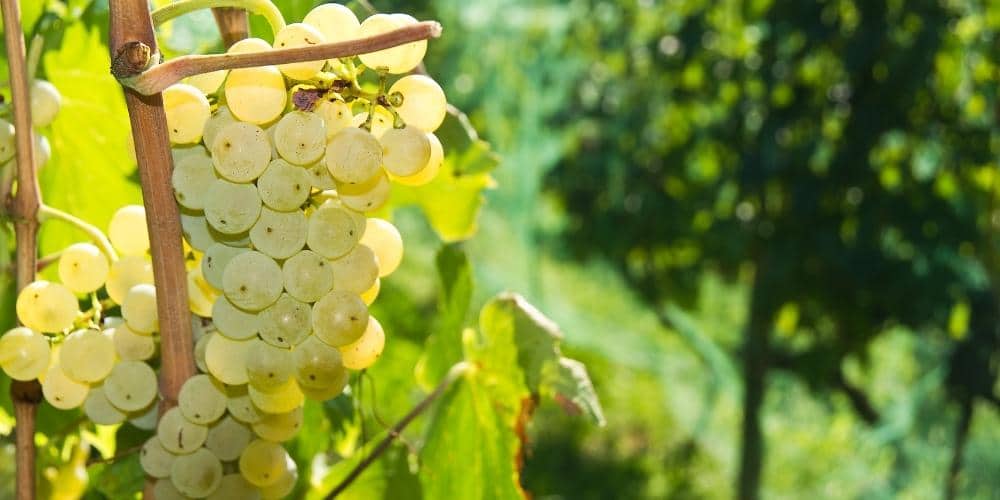
In Calabria, between the mount Sila and the Ionian coast there is an area dotted with castles. They once belonged to the noble families who have inhabited the region over the centuries. Here, in the warm Mediterranean sun, various vines thrive, including Malvasia, Galioppo, Greco Nero and Greco Bianco, which actually finds its perfect habitat even further south.
Imported by the Greeks as early as the 7th century BC. from this vine comes a wine that is probably the most appreciated in the region. With its amber color and a characteristic herbal and citrus fruits bouqet, it's an excellent accompaniment to dessert.From Cotronei, on the Sila, to Rocca di Neto, with its rock caves, up to the beautiful beaches of Cirò Marina, you can treat yourself to an unforgettable tour. Along the way you'll get to know an ancient culture and the very rich local cuisine, while also tasting excellent Chardonnay and Cabernet, which are a little unusual in Southern Italy. As evidence of the glorious past of this region, you'll also find the important remains of the temple of Apollo at Punta Alice, where the colossal head of the god is preserved.
The small town of Melissa, by the sea, is also worth a stop, also because it's the home of the homonymous wine, another pride of the rich tradition of Calabria. It's no coincidence that in ancient times this area was nicknamed Enotria, which means Land of Wine in Greek. Explore the enchanting natural scenery of the Sila National Park, take advantage of the convenient e-bike rental service, and discover the most evocative itineraries with the Visit Italy ticket.
And where there is no whine there is no love, nor any other delight have mortals
16. Wine Route Terre dei Sanniti
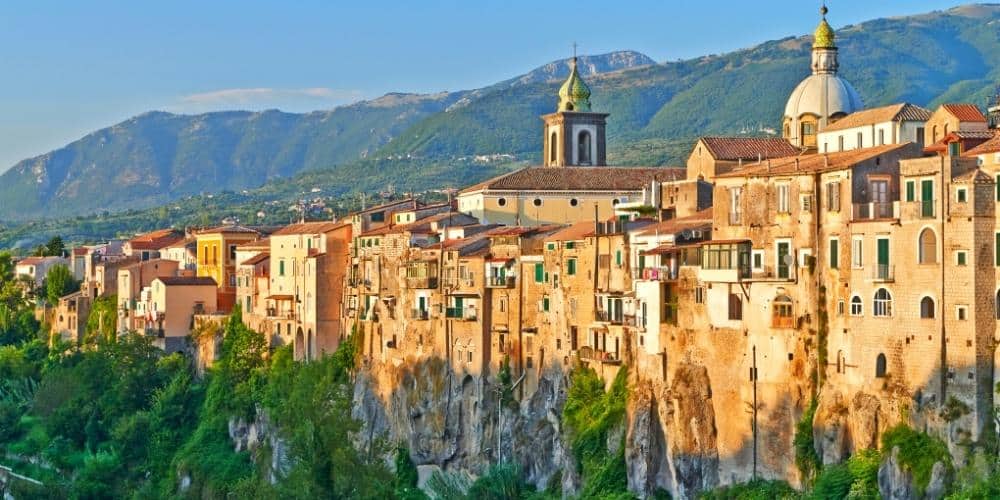
From Benevento, almost to Caserta, in Campania, there is an area where life flows quietly. Here the cultivation of vineyards that extend for miles and miles is one of the greatest expressions of the local culture.
The traditional festivals linked to this production, which are among the oldest in Italy, also testify to this. On the other hand, viticulture here is advanced, and the cellars are always well-equipped. Solopaca, Castelvenere, and Torrecuso are some of the towns where the close link between the local population and ancient wine production can be seen and appreciated the most.
There are actually many different itineraries that make up the Wine Route Terre dei Sanniti. All the most popular start from the ancient town of Benevento. The first one reaches Telese Terme, passing through Castelvenere, Cusano Mutri, and San Lorenzello. The second one is a circular route that goes around the protected area of the Taburno Massif and includes Solopaca and the beautiful village of Sant'Agata dei Goti. The third itinerary, instead, deviates to Pietralcina and ends in San Marco dei Cavoti, a small town also famous for its nougat. Falanghina is the vine from which many of the most popular wines of the area are obtained, but Aglianico is also very popular in the Benevento's area for the excellent red wines produced here.During your stay in Campania, you can admire some renowned tourist attractions nearby, including the fascinating Royal Palace of Caserta and the magnificent gardens, benefiting from priority entry thanks to the exclusive ticket that Visit Italy has set aside for you.
15. Royal Route of Turin wines
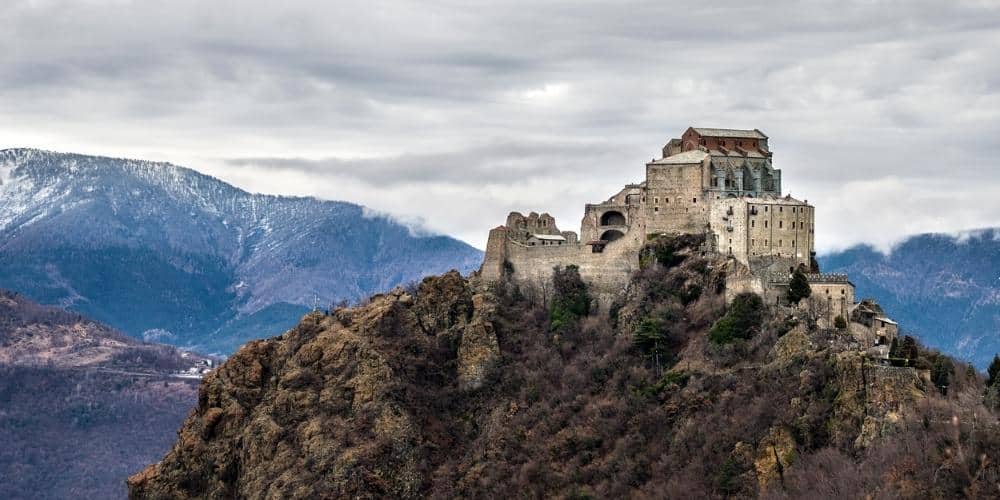
So why is this route called Royal? Because among the cellars of the XVII century and a luxuriant nature that includes green hills and alpine landscapes, you can stroll among castles and wonderful noble villas, in a truly unique setting.
There are more than 100 DOC and DOCG wine labels produced here, where some of the most renowned Italian vines have been grown since forever, such as Nebbiolo, Barbera, Dolcetto, or Bonarda. Even Malvasia, in its dark variety, is perfectly set in Piedmont, where it's used to produce different types of excellent sweet and liqueur wine.
Would you like to visit the most iconic places where the Savoy family dwelled? You could embark on an exciting journey through history and take part in an enthralling guided tour with priority entry to the magnificent rooms of Turin's Royal Palace using the ticket provided by Visit Italy.
14. Wine and Oil Route from the Alpes to the sea
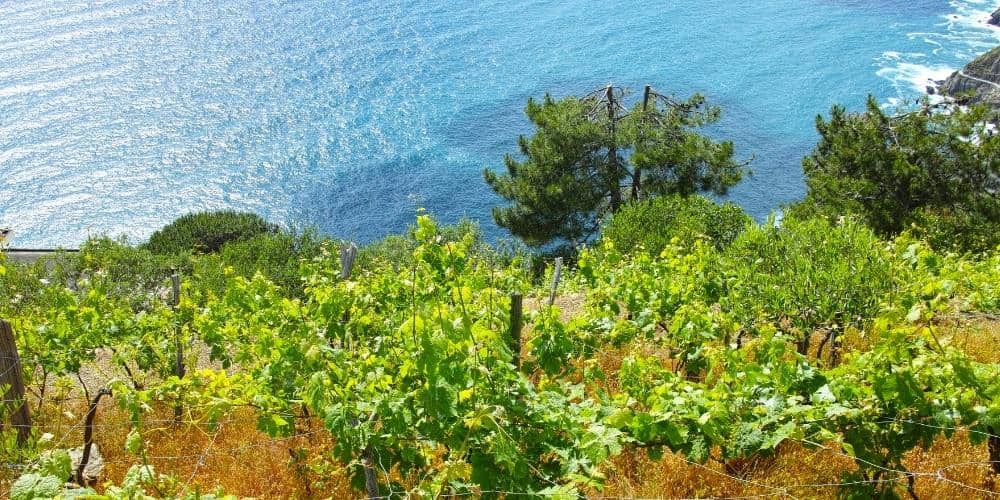
Liguria is a region characterized by a high and rocky coast and by mountains that almost touch the sea. The Wine and Oil Route that runs through it enhances this peculiarity, and with it also the variety of local products. Despite a harsh territory, not easy to cultivate, the warm Mediterranean climate, combined with the passion of the inhabitants, has favored the spread of olive groves and orchards and of course of a large number of different vines.
The Rossese, in particular, is one of the treasures of Liguria, difficult to find elsewhere. From it we get a red wine that's the best accompaniment to the genuine local cuisine. It's based on strong flavors, ranging from fish to meat, not to mention, of course, the excellent first courses.The Route crosses the Riviera di Ponente, starting from the Altopiano delle Mànie, and then bends westwards up to Colle di Nava. Travelling through characteristic villages, where ancient churches and castles are, you'll also get to know a truly excellent craftsmanship.
Would you like to sail along the enchanting Ligurian coastline lapped by crystal-clear waters? You can enjoy a marvelous boat tour and snorkeling accompanied by a professional and knowledgeable skipper who will show you the many wonders of the seaside towns.
13. Route of Sagrantino

Montefalco, in different variations, Sagrantino Docg and the sweet passito di Sagrantino, are the most renowned wines in the heart of Umbria. The Wine Route that passes right in the center of the region owes its name to a vine, the Sagrantino indeed, whose history is uncertain, but has been cultivated here for so many centuries that it's considered autochthonous.
The production of Grechetto is also widespread. It's a fresh and fruity white wine, also derived from an Umbria's native grape variety. It's grown all throughout the region but is particularly loved in the Montefalco area.The local gastronomy here is truly unique, so you can experience a myriad of combinations with your favourite wines, while discovering a territory rich in art and culture.
The wine route begins in Montefalco, renowned both for its wine and for its views. In Castel Ritaldi and Giano dell'Umbria not only the cellars are very popular, but also the oil mills. Here, in fact, an oil of excellent quality is produced. Finally there is Gualdo Cattaneo, the perfect stop for those who love walking in nature.
12. Wine Route of Trentino-Alto Adige
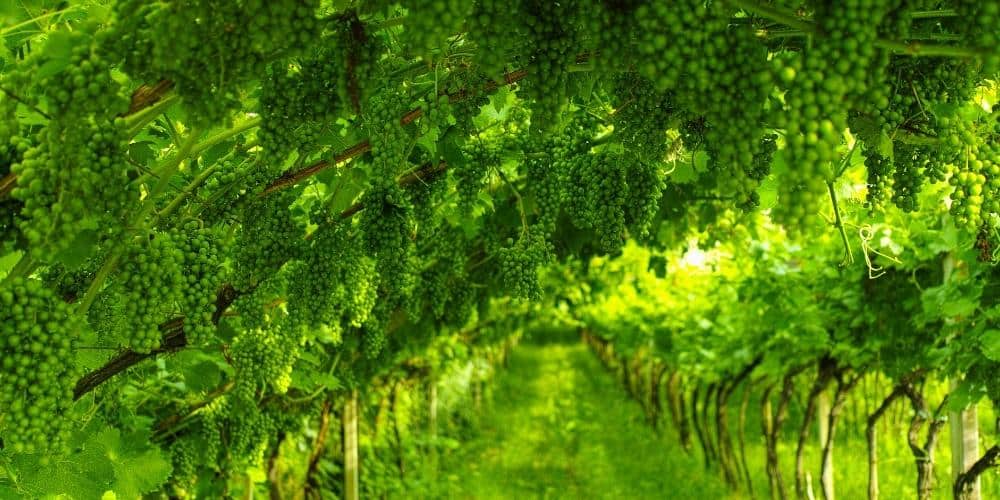
A beautiful itinerary that winds for 150 km, from Salorno to Nalles, in the province of Bolzano. We are in Trentino-Alto Adige, in one of the greenest regions of Italy, where the northernmost vines of the country grow.
Today there are 77 wineries to visit, traveling through landscapes of incredible beauty. From the lively and worldly shores of Lake Garda, go to Piana Rotaliana with its vineyards, to finally enjoy the wonderful, sharp peaks of the Dolomites. Also not to be missed is Trento, where you can visit the castle with its pretty gardens. Not too far away there's also the enchanting town of Rovereto.
Among the most popular wines of the region there are undoubtedly the Moscato, in the dry or sweet variety, or the Müller Thurgau, white, light, with a pleasant hint of green apple and sage.However, there are many more Trentino wines known throughout the world. The patience and wisdom of the winemakers has managed to successfully cultivate even a vine that's difficult to adapt to these climates, from which an excellent Pinot Noir is produced. The grappa is also very popular in these parts; suffice it to say that out of 130 distilleries in Italy, 30 are located in this region.
11. Roman-Etruscan Wine Route
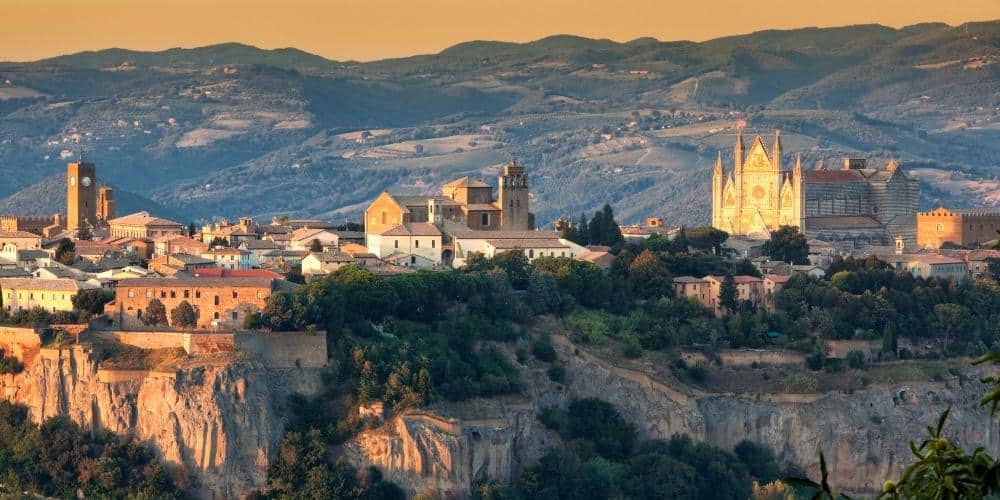
Once again we are in the green heart of Italy, in Umbria. This time the Route of Wine will lead us through the Tiber valley, in the lands once inhabited by the Etruscans.
Here, DOC and IGT red and white wines are produced. From Orvieto to Terni, passing through Amelia and Narni, your journey will lead you to discover wonderful villages rich in history, which are worth a visit on their own. Among the local wines worth tasting, however, there is for example the Ciliegiolo, mainly produced in Narni or Amelia; it's a red wine with an intense aroma of berries, already much loved at the time of ancient Romans.
The Orvieto area also has a very wide offer of white and red wines, dry or sweet. This is the only place in Italy where the Muffato is produced, with its typical amber color, much appreciated in the past by nobles, artists, and popes.
An interesting fact: according to some, the name of Orvieto would be of Greek origin. Apparently, in ancient times the city was called Oinarea, that indeed means the city where wine flows.
Yet I think that a great happiness comes to those who are born where the good wines are
10. Franciacorta Wine Route

Dream landscapes, art, tasty food and of course good wine. Franciacorta, in Lombardy, is among the most loved regions by wine tourism enthusiasts.
We are in the province of Brescia, south of lake Iseo, between Mount Orfano and the Oglio river. For biking lovers there are five wine routes passing through endless vineyards, where you can also practice trekking or Nordic walking, along well-marked paths. Furthermore, between Mandalossa and Cellatica there are several small villages to visit, with ancient castles and abbeys.
As for the wines, you'll be really spoiled for choice. Both in the cities, like Brescia, and in the small villages, you'll taste Pinot Blanc or Noir, Chardonnay or Cabernet.
Not to be missed, of course, the Franciacorta which gives its name to this fascinating Wine Route. In its six varieties, this wine is also an excellent excuse to learn about the local cuisine, as it can match basically every dish, from fish to polenta, to sbrisolona, the traditional dessert of this area.
09. Salento Wine Route
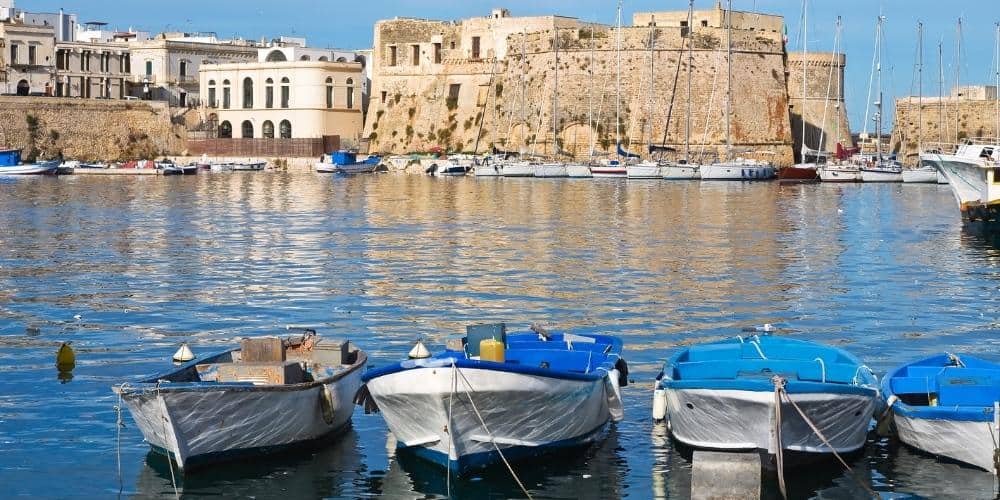
Nero di Troia, Primitivo di Manduria, Nergoamaro and many more. Apulia, and Salento region specifically, is where some of the most loved Italian wines are born, red and full-bodied, with a strong taste.
An itinerary of great beauty, culture and centuries-old traditions winds along the Via Appia, the ancient road that connected Rome to Brindisi. This is a trip suitable not only for wine lovers, but for all those who want to immerse themselves in the extraordinary richness of southern Italy.
Starting from Parabita you'll cross the wonderful region called Murge Salentine, to go on along the vineyards of Alezio, to the small, beautiful Nardò, with its baroque buildings. Later, heading towards the Ionian coast, you'll get to stroll along heavenly beaches and visit Gallipoli, a well known town by the sea, to finally conclude your journey in Maglie, an important archaeological site where some fascinating mammoth fossils are preserved.Along the way, to accompany the wines of the region, you will also find a great variety of excellent cheeses and cured meats, that often serve as a base for the local street food, as well as for the dishes of the most ancient culinary tradition.
08. Cannonau Wine Route
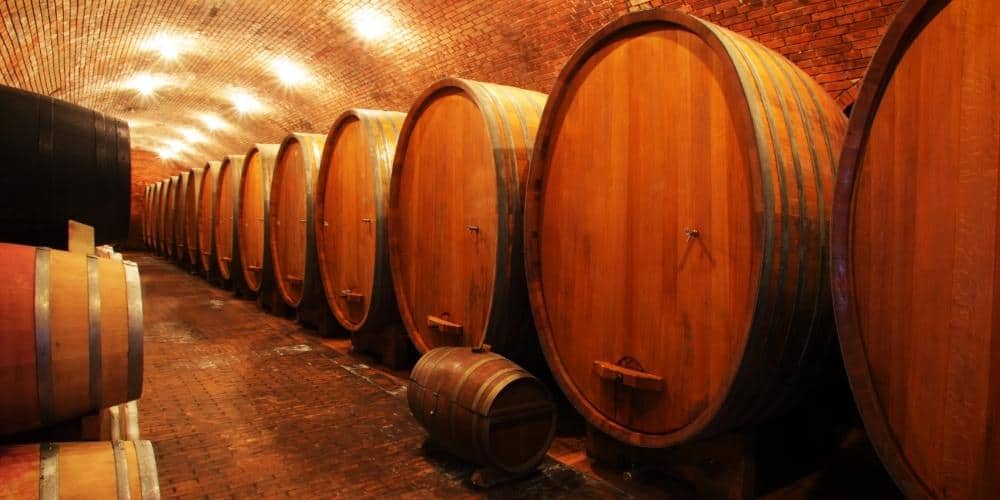
With its endless beaches of soft white sand and the wild, fascinating landscapes of the hinterland, Sardinia is an island that should be visited at least once.
Here, among the ancient and mysterious nuraghi, rows of vines thrive as far as the eye can see. Cannonau, the vine that gives its name to this Wine Route, is the most famous of this region, known and appreciated for its strong taste and sweet strawberry scent. Born from grapes left to ripen slowly, the wine bearing the same name has its home in the south-east of the island, between the cities of Nuoro and Cagliari, and the wonderful coast of Orosei.
To fully appreciate the flavors and hospitality of this incredible region, there is the state road 131, which passes through some of the most interesting places, such as Jerzu, the city of wine par excellence, Villasimius with its crystal sea, up to Mamoiada, the town of the Mamuthones, the ancient and suggestive masks of the Sardinian Carnival.Along the Cannonau Wine Route you can also admire the red porphyry cliffs, or the archaeological finds of the ancient necropolis, while learning about truly exceptional varieties of flavors and traditions.
07. Etna Wine Route
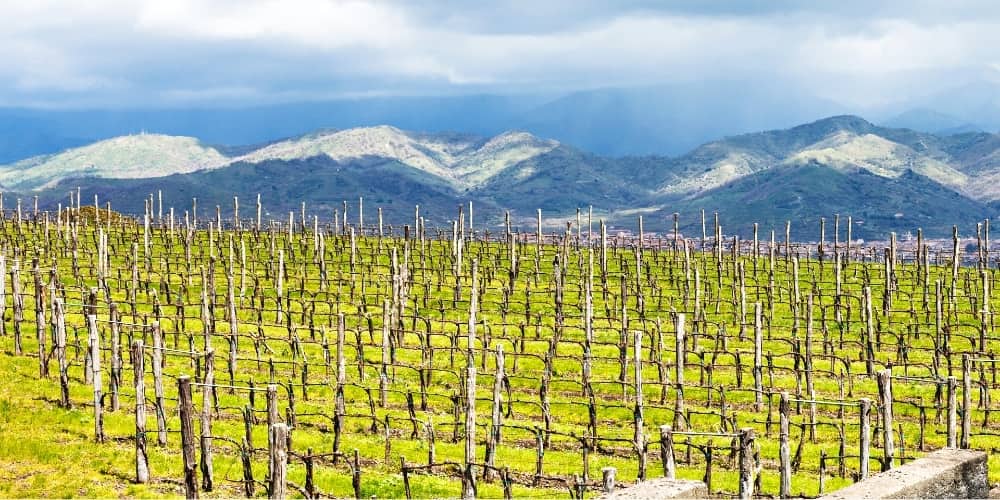
Under the hot sun of Sicily, along the slopes of Etna, a beautiful enotourist route winds its way through a fertile territory, characterized by black soil and blue skies.
We are in Riposto, in the province of Catania, where many of the most important wines of the whole island are produced. Whites, reds, sparkling and rosés, the variety is great and the many tours that can be organized in this area will get you to know the other products of Sicilian gastronomic excellence, in particular oil and desserts.
To learn more about the wine production of this region, which has existed and resisted since Magna Graecia times, there is also an interesting wine museum, but it's the sun-kissed landscapes that will most likely remain in your heart.Along the Etna Wine Route you'll get the chance to see the terraces where grapes grow, clinging to the slopes of the volcano, but also the ancient noble villas and the farmhouses. An alternative and fun way to get to know this corner of Sicily is the Wine Train, which travels along the ancient narrow-gauge tracks of the Circumetnea railway.
06. Barolo Route
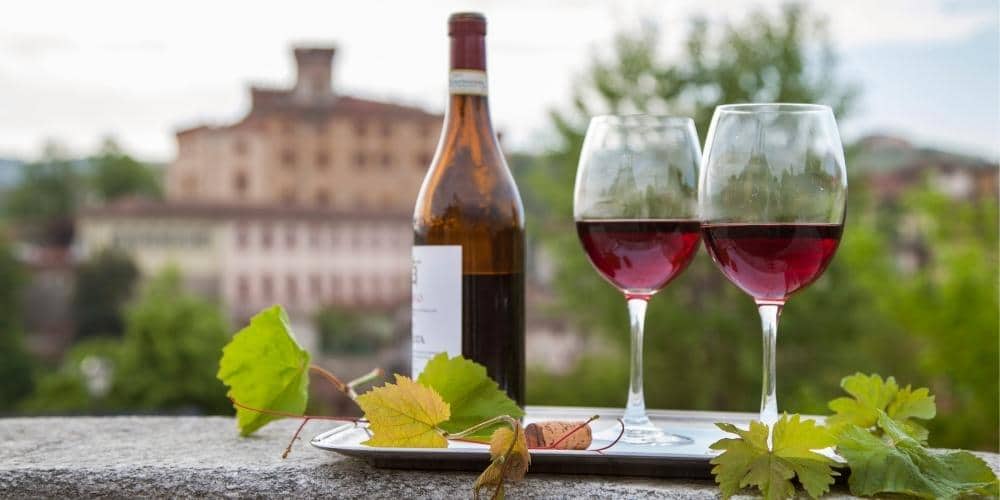
In the Langhe, in Piedmont, between the Ligurian Apennines and the Alps, another one of the most famous Italian wines is produced. It's Barolo, from which the Route takes its name. Along the 80 km of this path you can choose from more than 100 cellars to visit, to taste the typical wines, including Nebbiolo and Barbera, which are produced in the Langhe region too.
The landscapes here are particularly beautiful in spring, but autumn is the harvest season and following this itinerary at that time, makes the experience even more fascinating. Ideally the journey starts in Alba, to continue towards Barolo, up to Dogliani, however the routes you can visit are numerous, and all of them interesting.You could choose, for example, by thematic area: the art route, or the gastronomic one, to taste, in addition to local wines, also the Alba truffle, another unmissable excellence of Piedmont.
There are also many possibilities to get to know this region by trekking the green hills and the endless fields. The paths are not particularly demanding; the longest one runs from Barolo to Monforte d'Alba in 6 km.
05. Route of Vino Nobile di Montepulciano
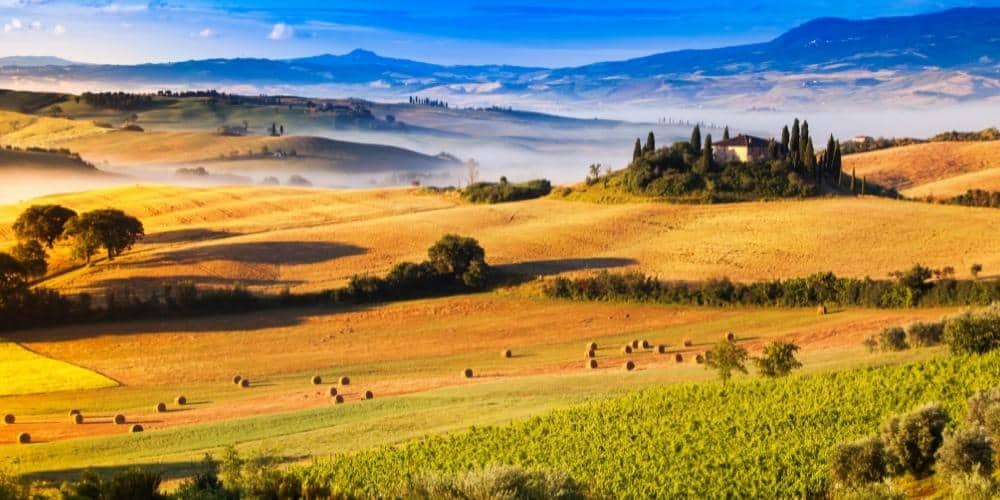
This itinerary of almost 100 km crosses one of the most beautiful areas of Tuscany, from Montepulciano to Pienza.
Between Val d'Orcia and Val di Chiana you will travel through a landscape of incredible beauty and ancient history. The countryside here always offers spectacular views and the art treasures that you can admire along the way are many, starting from the enchanting villages scattere all along the route. Including those where one of the most beautiful wine routes in Italy begins and ends.
In the basement of the Renaissance palaces, or in cellars surrounded by greenery, you'll see the huge oak barrels where the precious Nobile di Montepulciano ages for two years, acquiring its typical ruby color.Or you could join a picnic inside the vineyards where Sangiovese grapes mature, the undisputed protagonist of the wine production of this area. In small taverns, as in luxury restaurants, you can also experiment with combinations between wines and cheeses or meats that are the pillars of the local cuisine.
Wine, especially in Italy, is the poetry of the earth
04. Wine Route of Val di Noto

In Sicily, particularly in the valley of the city of Noto, famous for its marvelous baroque palaces, many famous wines are produced. Moscato di Noto, Eloro and the very famous Nero d'Avola are just a few examples. Also, don't miss the oldest Italian wine, the sweet Moscato di Siracusa which is produced here as well.
The itineraries to choose to get to know this Route are mainly two. The first runs partly along the sea and goes from Syracuse to Pachino, where the wonderful natural oasis of Vendicari is located, passing through Noto and Avola. Not far away there is also Modica, which is certainly worth a short detour for its chocolate, as well as for its architecture.
The second route goes inland, instead, starting once again from Syracuse but deviating to the small village of Palazzolo Acreide. In both cases you will get the chance to visit archaeological parks, including the Necropolis of Pantalica, the largest in Europe, or to rest on beaches bathed by an uncontaminated sea.Sicily has always so much to offer, but particularly in this area you will travel through naturalistic scenarios that will stay with you.
03. Wine route of the Sorrento Peninsula

In Campania, in one of the most beautiful and renowned areas of Italy, there are traces of wine production since the most remote antiquity. Pompeii is not far away, this means that the wines of the Sorrento Peninsula were already exported more than 2000 years ago.
The Route that crosses this land is made up of two main branches. The first climbs up the slopes of the Lattari Mountains, a region of centuries-old traditions and unparalleled views. Here the most common vines are for example Piedirosso, Aglianico and Uva Mosca.
The second branch of the Wine Route runs along the wonderful coastline and also includes the island of Capri. Uva del Convento, Falanghina and Greco are among the most cultivated vines. The wines that come from these and other vines are both white and red, slightly frothy and characterized by an intense aroma and a fruity aftertaste.Have fun tasting them all, together with the countless typical products. From citrus fruits to pasta, from pizza to mozzarella, not to mention the olive oil, you will be truly spoiled for choice.
02. Route of Prosecco and wines of Colli Conegliano Valdobbiadene
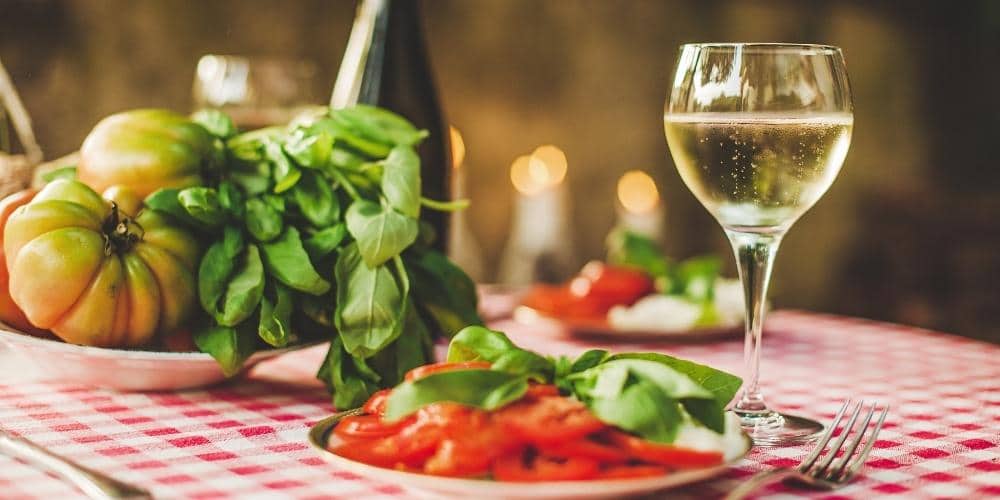
Prosecco, a sparkling wine much loved and imitated in Italy and around the world, is born in Veneto. In the beautiful area between Venice and the Dolomites, crossed by the Prosecco Route, the first Italian Enological School was also created, in 1876.
The itinerary of about 90 km begins in Conegliano and ends in Valdobbiadene, crossing a territory rich in history. Here you can visit, for example, a beautiful XVII century hermitage in the area of San Pietro di Feletto and the older XII century parish church.The most beautiful sceneries are those seen from Santo Stefano. Here the view sweeps over the green hills where the grapes of which the local wines are made grow. There are numerous ring routes to be done on foot, among ancient villages, cellars and woods, that will also offer you the chance to visit castles, historic abbeys and ancient mills.
Traveling in these lands means not only tasting the local wines, perhaps accompanied by the excellent cold cuts of the Veneto region, but also admiring wine themed artworks. In fact, this is the homeland of Vignarte too. It's an open-air museum where the chestnut trunks, the head supports of the rows of vines, have been transformed into sculptures. The large iron totems with information panels explaining the slang of the farmers of Veneto are fun and interesting as well.
01. Wine Route of Chianti di Montespertoli

Not far from Florence, in Montespertoli, one of the most famous Italian wines is born. It's Chianti, and the one produced here is particularly suitable for becoming a reserve, in fact it's usually appreciated by the most demanding conoisseurs.
The Wine Route of the same name is made up of different itineraries. The most popular is the one that winds along the via Lucardese, from Monterpertoli to the small fortified village of Lucarno, near which there is also the Wine Museum. Going on towards San Lorenzo you can also visit the beautiful Pieve di San Piero in Mercato with an important museum of sacred art.
Another option is to skirt the Virginio stream up to Ginestra Fiorentina, take a break to visit the ancient Roman villa of Vergigno, and then head towards San Donato in Livizzano.
Along the way you will not only find cellars and immense vineyards, but also the oil mills where a very high quality extra virgin olive oil is produced. Bakeries that still work with artisanal methods are here as well. Last but not least, this is also the land of the tasty white truffle. Another famous wine of this region is Vin Santo, which generally goes with the famous cantucci, the dry sweets of Siena.


